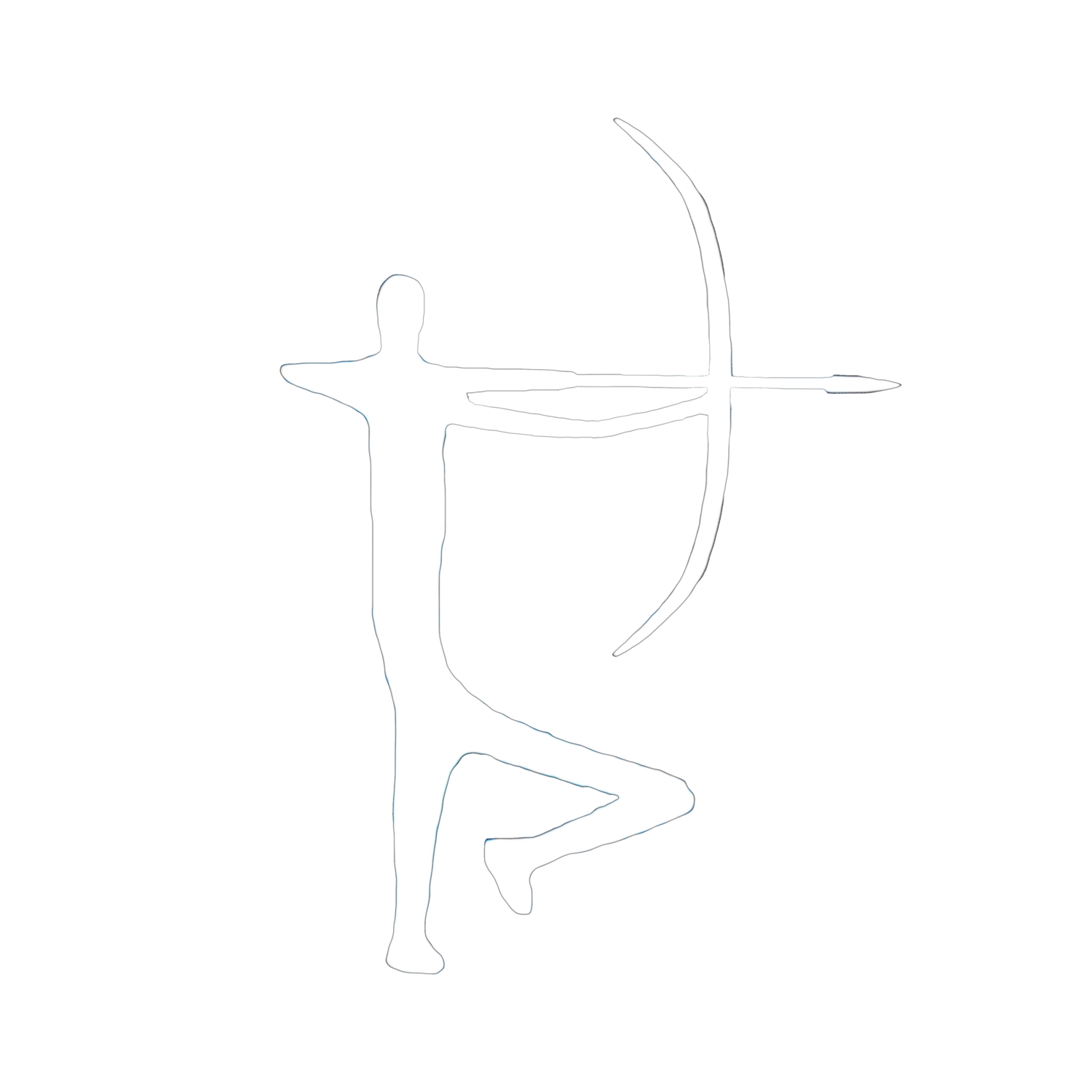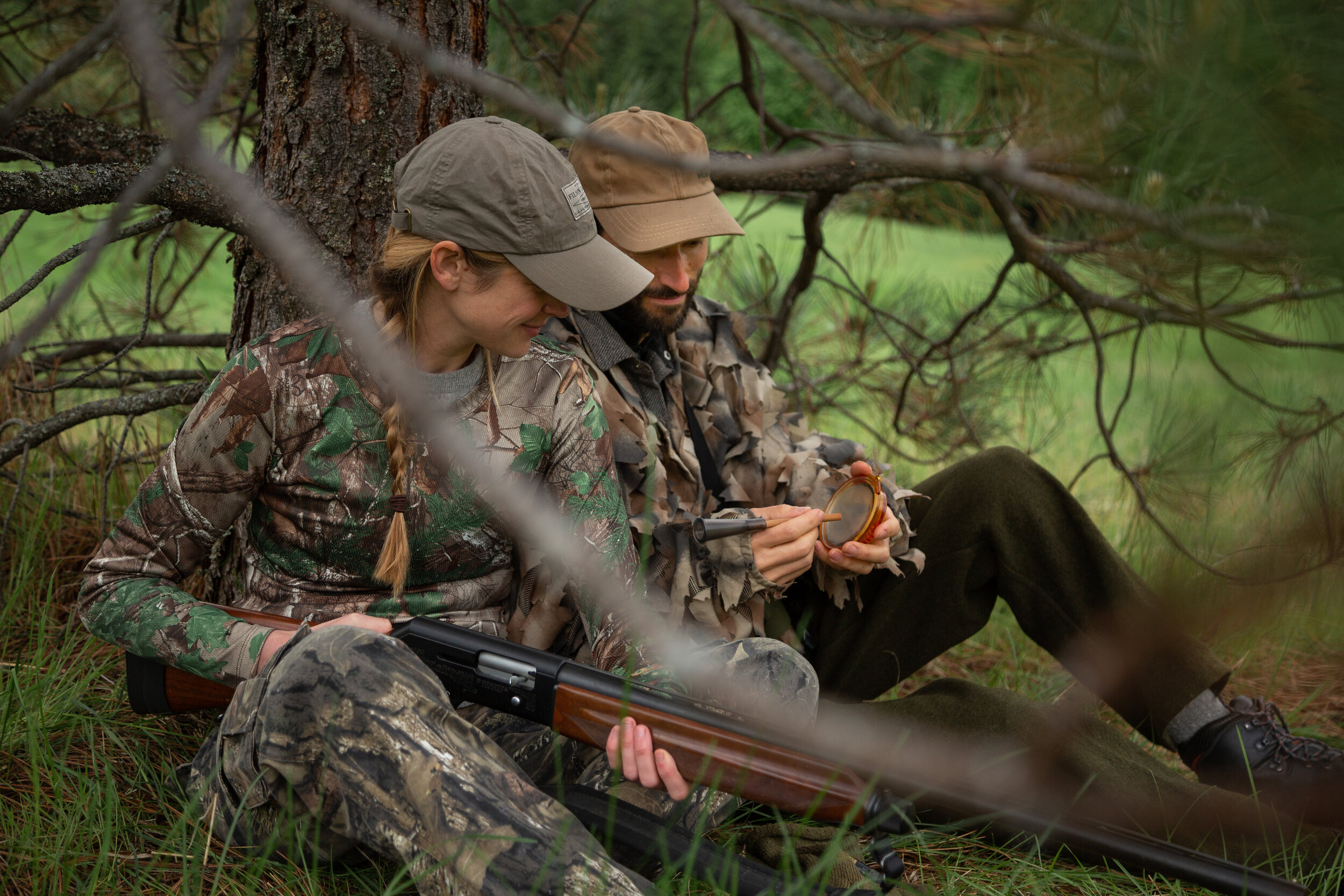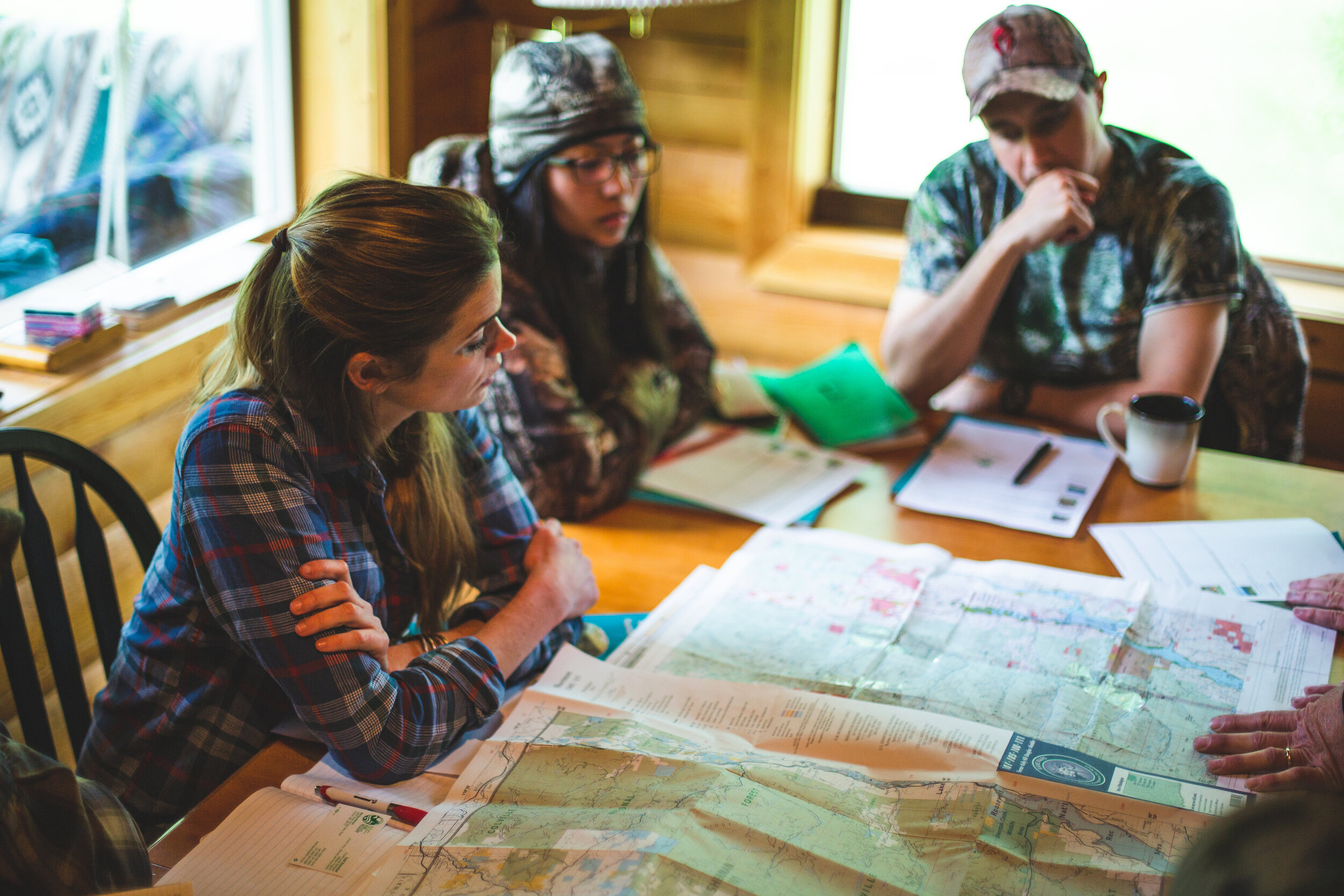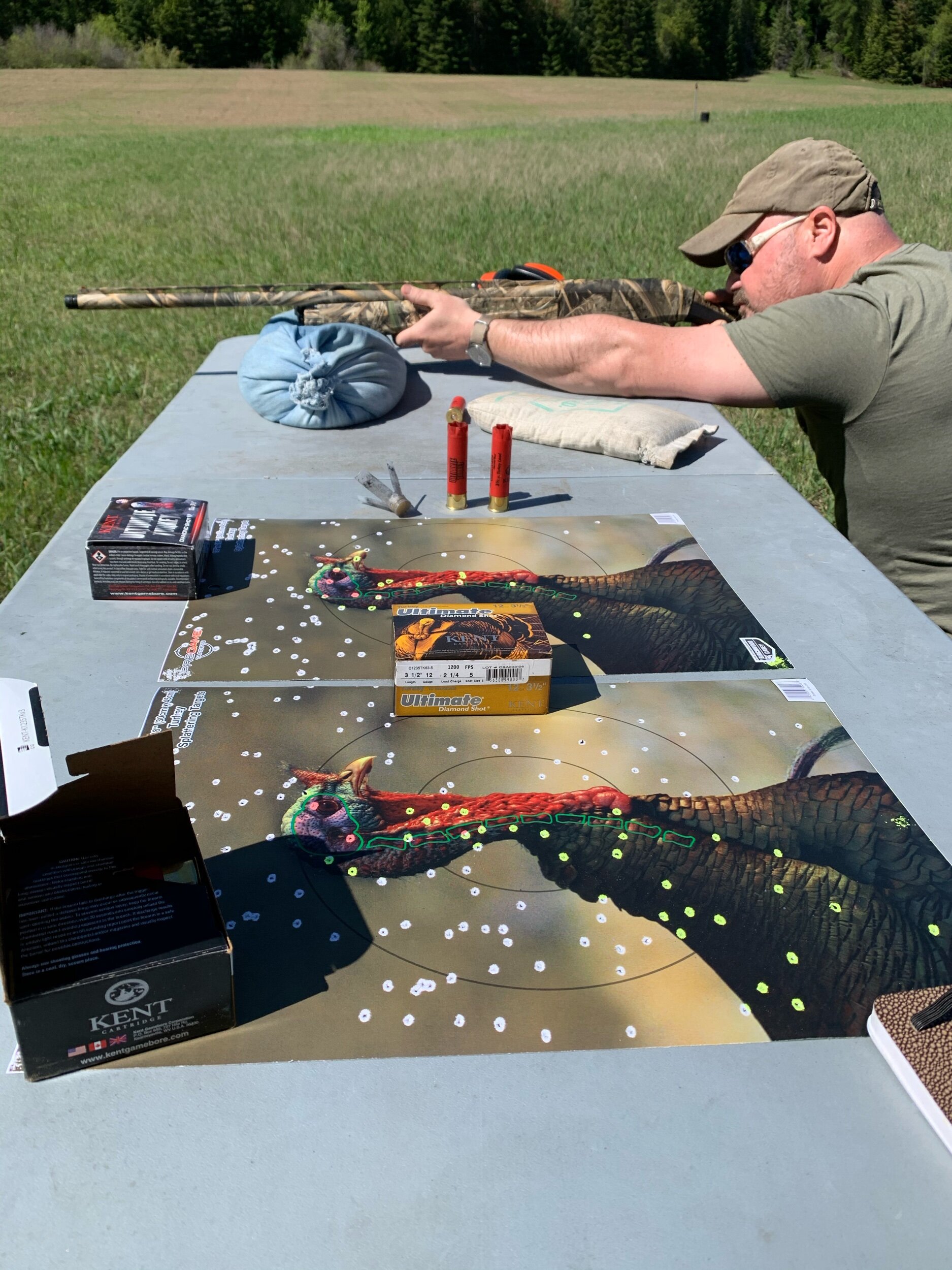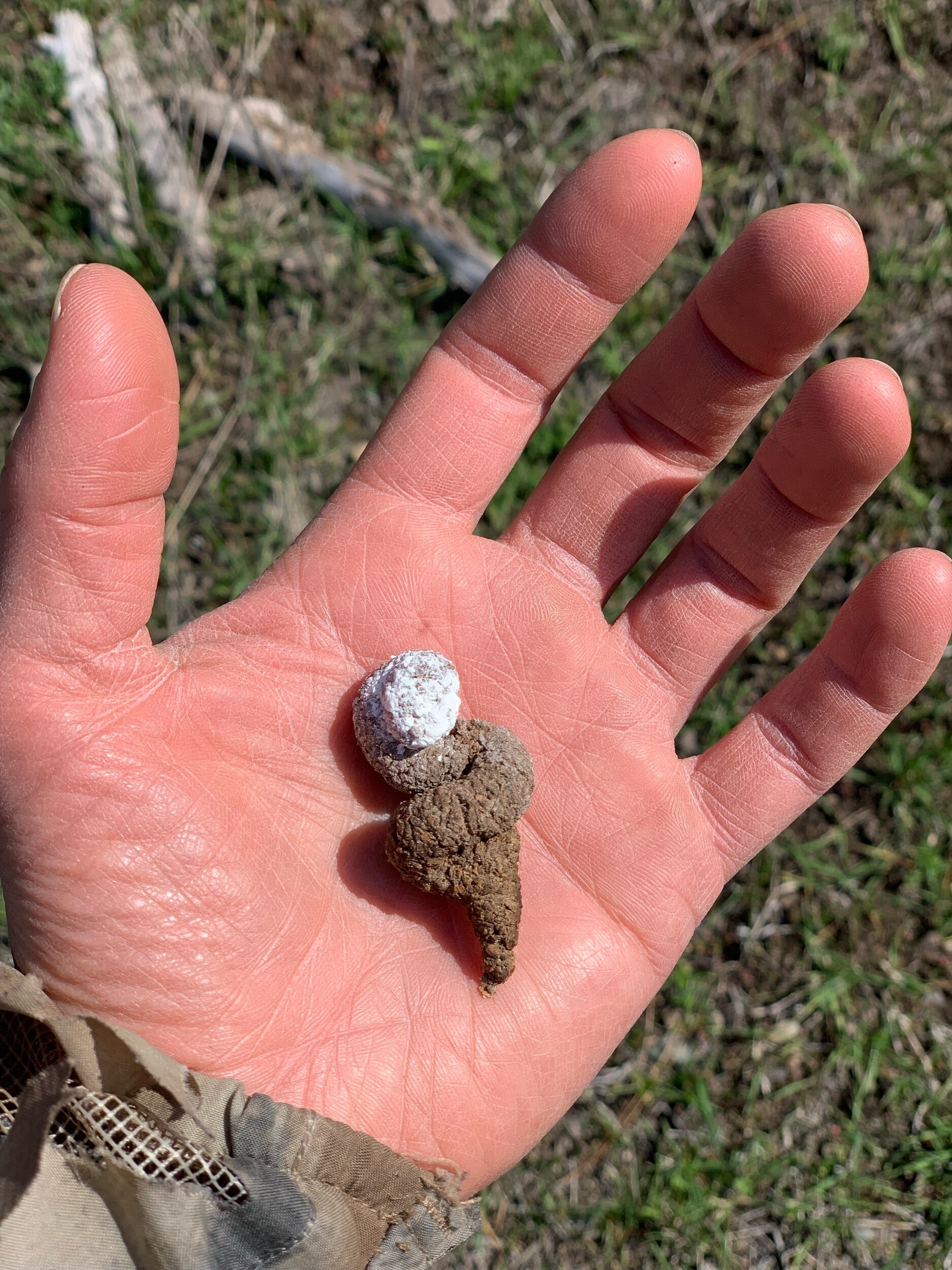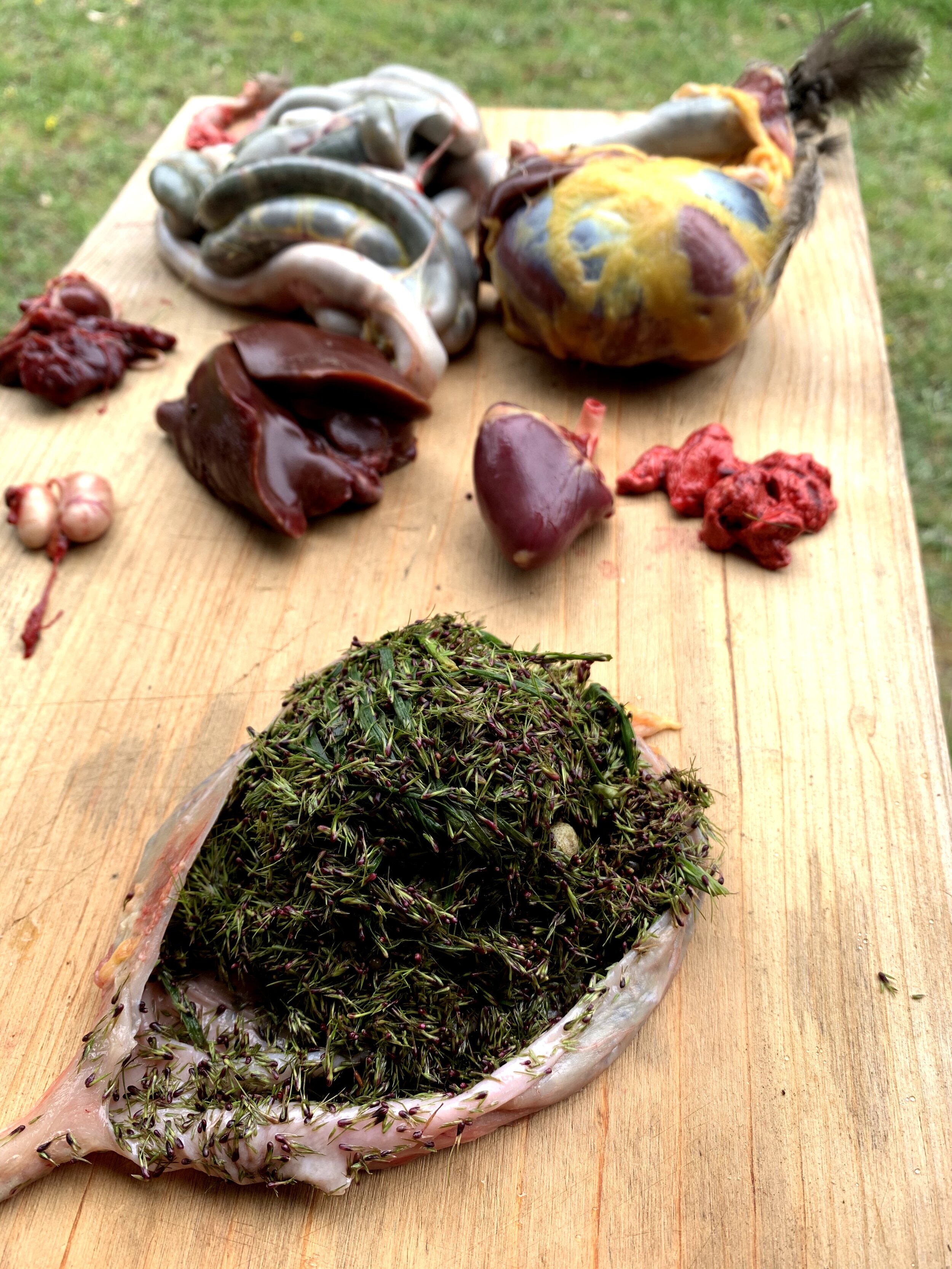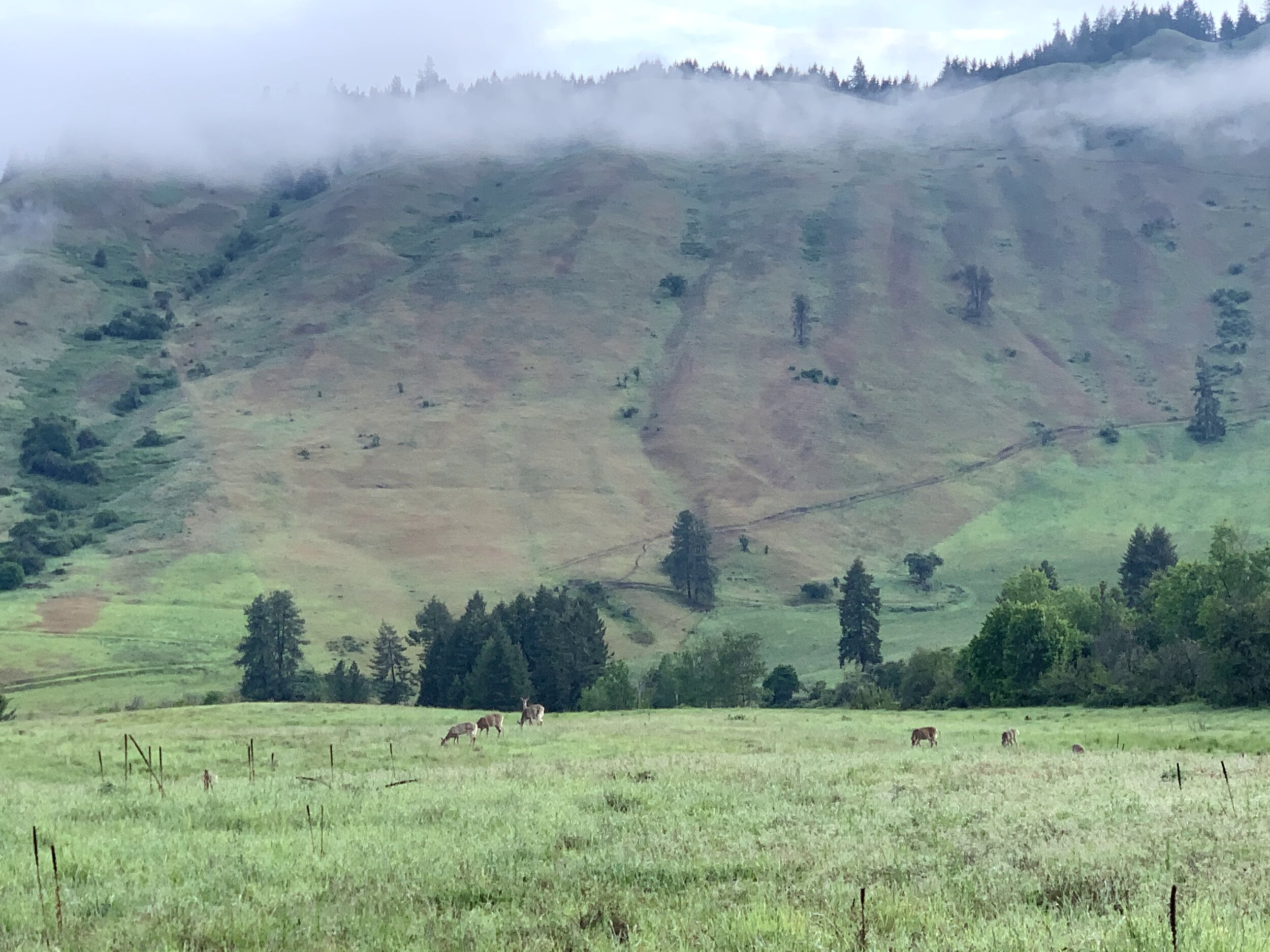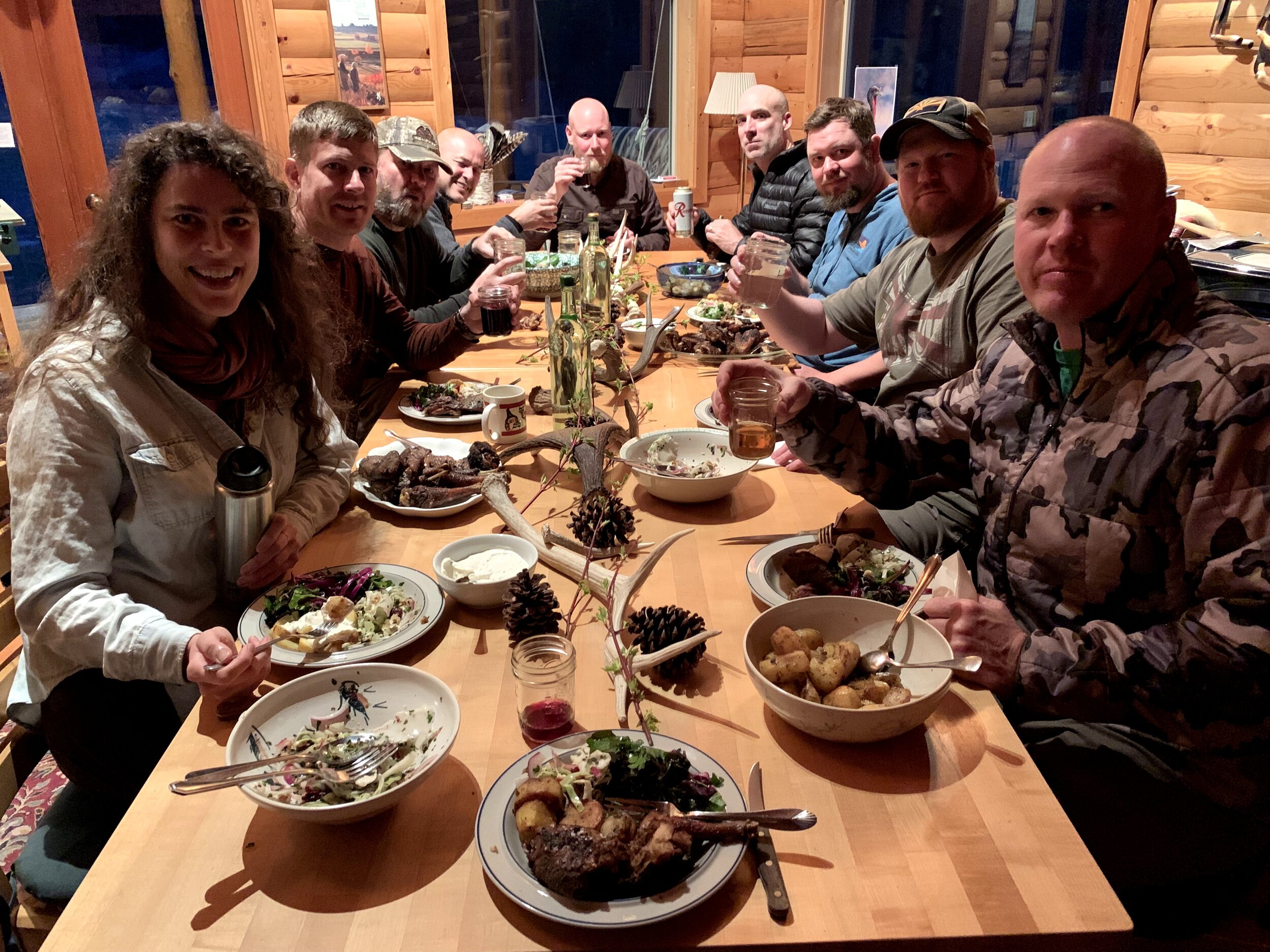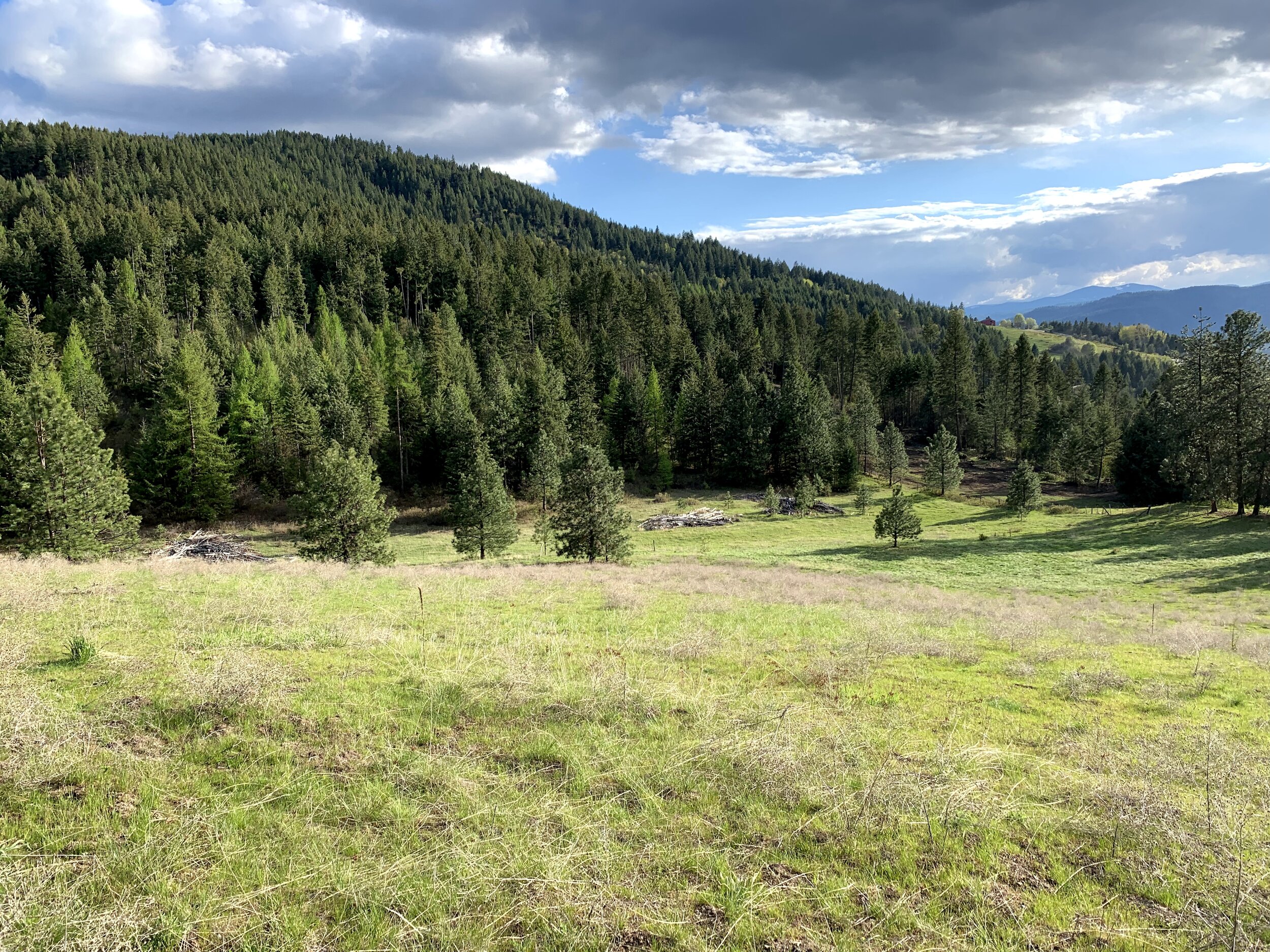
What Do I Need to Hunt Turkeys?
Required Gear
WA state hunting license and Turkey Tag(s)
A small game license and turkey tag are the minimum required to hunt turkeys. If you plan to hunt big game as well, you can purchase the small game/big game combo at a discount. See WDFW license fees.
Shotgun (or muzzleloader, or bow/arrows)
12 gauge is common (20 ga. will work) ideally chambered for 3” shells (or longer) with choke tubes or a fixed full choke. If your gun takes choke tubes, you’ll want a full or extra full turkey choke (sold separately from your shotgun) to keep your pattern tight, though some TTS ammo recommend a modified choke, which is usually standard issue. Pumps, semi-autos, and double-barreled shotguns will work and unless you are looking to get a turkey-specific shotgun (camo with special sights and grips, etc.) a typical waterfowl shotgun will do the trick and can be used to hunt other birds more easily. If bowhunting, standard broadheads will work, or turkey-specific arrowheads.
Nontoxic ammo (#4 shot or smaller required by law)
5-10 rounds
Some public state lands in WA and some entire states (CA) require non-toxic ammo such as Federal Heavyweight or HEVI-Shot in tungsten, bismuth, etc. We also prefer to shoot nontoxic ammo (tungsten or steel) on our land (when patterning your gun during the course) to limit lead pollution and exposure. The tungsten options are a little pricier, but they are very effective, and chances are you will only use a few each season. If using steel shot, consider using #4 shot; if Tungsten/Bismuth (HEVI-Shot): #6-9 shot. 3-inch shells are sufficient for most needs and don’t kick like a mule like the 3 1/2-inch magnums. The tungsten shells are more effective because the metal is denser and therefore retains its energy at longer range, which means shot size can be smaller, effectively increasing the number of pellets to make a denser pattern. Steel duck loads work too but are a little less effective, as steel is not as dense, so a larger pellet size is needed. Consider 3 or 3 1/2-inch magnums in steel 4’s. If you also want an option in lead, Winchester Long Beard (in #6) has performed well at a reasonable price. It is illegal to use shot larger than #4 (so #3, 2, 1, 00, etc. is not legal). #4, 5, 6, etc. is OK.
Online ammo search engines such as AmmoSeek offer some of the best prices if you have time for shipping (usually a week or less). You can search using different filter options and you’ll notice that turkey loads are often several times more expensive than duck and upland bird loads. This is partly because they pack as much into the turkey loads as possible (more powder and a heavier payload of shot). But you can often find some much more affordable magnum waterfowl options that are very close to the turkey loads (remember the shot size restriction, above). Pay attention to muzzle velocity and ounces of shot. Look for at least 1 1/8 to 1 1/4 oz Hevi-shot/TSS in 20 ga and around 2 oz. in 12 ga (3-inch shells). Upland or dove loads are a little light for turkey but will work at close range. Try the following searches for #7 shot at AmmoSeek. Prices as of spring ‘23 appear to start at $4-8/round.
Camouflage clothing
A simple and adaptive system consists of adequate base layers, drab outer layers (light wool or weather resistant pants and jacket, an a ghillie suit to pull over everything. If not included with a ghillie suit, a facemask/hood or neck gaiter that can be worn with a camo billed hat to shade your face and eyes along with camo gloves. Camo outer layers (in a NW woodland/brush pattern) are nice in that they can be worn without the ghillie suit.
Hunters from a previous course; all of whom are dressed well for the occasion. This group shot four birds. One does not need the most fancy camo to be effective.
Binoculars
Binoculars are extremely useful for studying birds at a distance and determining if they are legal to shoot. Any pair will do if you have something. If you are considering purchasing, Vortex offers pretty good value. I’d look for something in the 8 to 10 power. 8x42 and 10x42 are common sizes for hunting and aren’t too heavy. Of course you can spend more on better quality glass (Swarovski, Leica, Zeiss, etc.) but if you have questions we will go over some options at the course. If you’re in the market for a pair, here are some options:
Vortex Diamondback HD 10x42 are a good entry level pair; great value
Vortex Viper HD 10x42 mid-level
Vortex Razor HD 10x42 high-end
Swarovski EL 10x42 top of the line
Turkey call
Slate calls are some of the easiest to use, produce a good sound, and are easy to carry in the pocket. There are some resin-filled pot calls that operate the same way but they are more difficult to get a consistent tone and require more maintenance. Here’s a great starter call. Lots of higher end options available.
GPS or Maps
Smart phone/tablet with onX Hunt map app. If using the free 7-day trial, start it just prior to arriving and download an “Off-Grid” map (coordinates will be shared after registration). For a 20% discount on purchasing the service after the free trial, use code NWTF on the onX website. Or order online. There are other apps out there that offer similar features (BaseMap, Gaia, etc.).
There’s nothing like a paper map you can pull out for a high level view of the land or while talking to a local who can point you in the direction of some opportunities. I like the RAMS Maps. We primarily use 121 Huckleberry, as well as 101-111 Sherman-Kelly Hill-Douglas-Aladdin. And to a lesser extent: 113 Selkirk, and 117 49 Degrees North. USFS maps or any other maps showing public ownership can be useful.
Also, review the WDFW website tools for finding and reserving private lands to hunt. If you have time, go through the process of reserving a site near us during your stay. It is a free service and can offer some unique opportunities.
Knife
Any simple pocket knife will do the trick for field dressing. A blade 3 inches or longer will help if electing to bone out the carcass. Buck Knives in Idaho makes a folder called the Bantam, which is versatile and easy to carry. Here are the large and medium options.
Regulations
Make sure to familiarize yourself with the seasons and regulations (we will review at the course).
Optional Gear
Turkey decoys
Decoys can be effective and are probably the next best piece of gear after a call. A hen and a jake combo like this one is a good option. I have used inflatable and solid plastic decoys. Inflatable are easier to carry but not as life-like. And there are a number of more life-like options nowadays like this hen or this jake. Whether or not you hunt with decoys or a blind comes down to personal preference. Every situation is unique and having a decoy or two never hurts.
Some light reading and endless opinions can be found online:
Blinds
Sometimes hiding in the brush along the edge of a field is easier but blinds can be helpful and allow better concealment. Good camo will go a long way, but you have to be motionless. Hunting from a blind can be more comfortable and effective.
If you prefer to move around and run-and-gun and hide in the brush then travel light or build a blind out of natural material in the woods and/or wear effective camo. Always check first if there are restrictions on cutting live branches, etc. on public or private lands. Pop-up blinds are designed to be somewhat easy to carry and erect in a hurry, without the need for putting pieces together, etc. A small pruning saw or shears help in building blinds. And a burlap coffee sack or camo netting can be used to build a blind on site.
Additional turkey calls (box, mouth/diaphragm, etc.)
Box calls can produce a great sound and are classic instruments of the trade, but can be a little cumbersome to carry. Diaphragm calls have the hands-free advantage (they are in your mouth) though take some time and practice to master. Push button calls can be attached to your gun to easily use with a small movement of the finger.
Sling and a small camo/drab pack
A sling for your shotgun can be useful if you are carrying anything else to your hunting spot, or carrying a bird out of the field… If your shotgun doesn’t already have studs to attach the sling swivels, it’s more complicated.
Tick mitigation
Ticks are out during the springtime east of the Cascades. A pair of light-weight gaiters to keep your pant legs closed off helps, as well as tucking in your shirt, wearing a hat and doing checks at night under your belt line and armpits. There may be tick sprays and deterrents on the market but I have not used them. Ticks move rather slow and it usually takes hours for them to try to bite so don’t panic if you see one; rather than flicking it, I prefer to crush it between by thumbnails so it can’t find its way back to me later. If it has began to attach, grab ahold of it as close to your skin as possible and pull gently (or research various approaches online).
